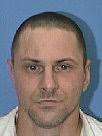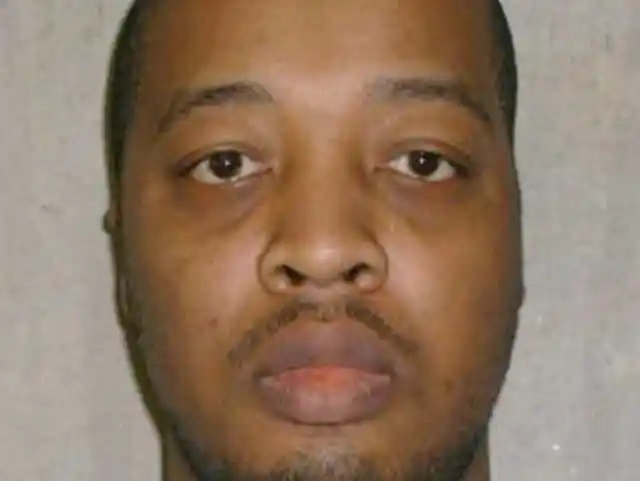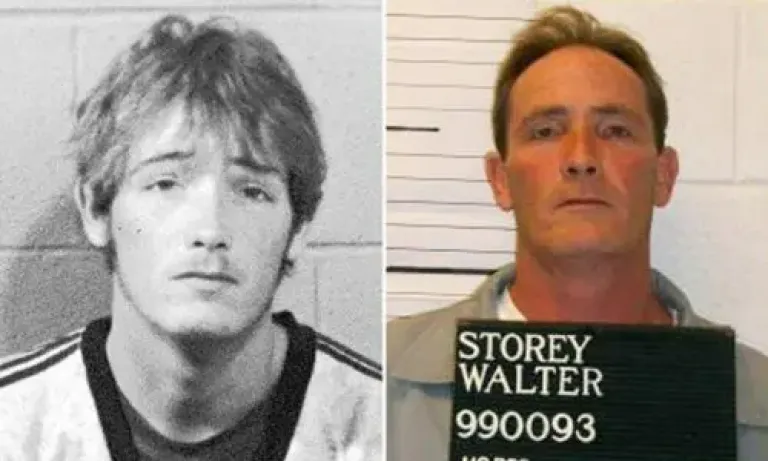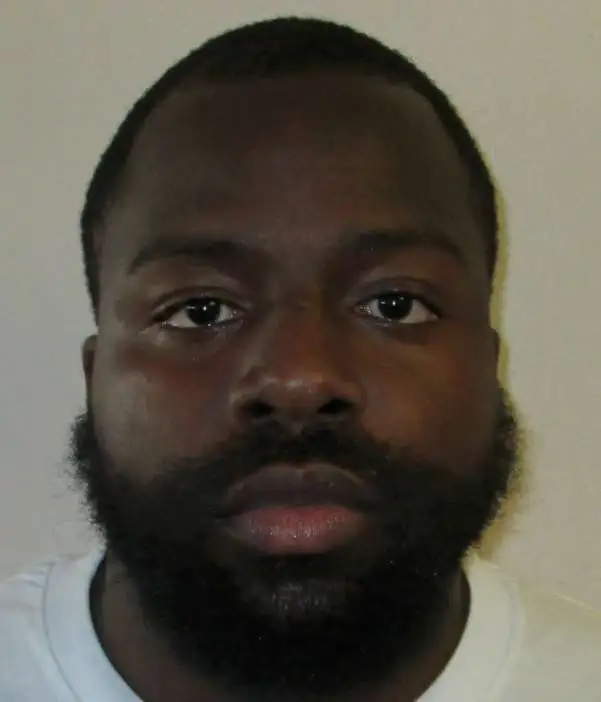Clarence Allen Executed For 3 California Murders
Clarence Allen was executed by the State of California for three murders
According to court documents Clarence Allen found out that his son’s girlfriend informed on him for a robbery so he would arrange for someone to murder seventeen year old Mary Sue Kitts
While in prison on the murder conviction of Mary Sue Kitts Clarence Allen would arrange with another inmate to murder three people who testified against him: Bryon Schletewitz, 27; Douglas White, 18; and Josephine Rocha, 17. For the triple murder Allen would be sentenced to death
Clarence Allen would be executed by lethal injection on January 17 2006
This was the last execution in California
Clarence Allen Photos
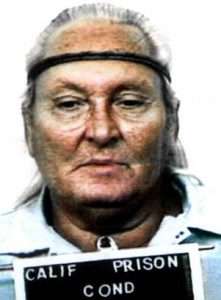
Clarence Allen FAQ
When Was Clarence Allen Executed
Clarence Allen was executed on January 17 2006
Who Was The Last Person Executed In California
Clarence Allen was the last person executed in California
Clarence Allen Case
California prison officials executed 76-year-old murderer Clarence Ray Allen at the state prison here early today after his final appeal was turned down by the U.S. Supreme Court. His death by lethal injection was announced at 12:38 a.m. by Elaine Jennings of the Department of Corrections and Rehabilitation.
Allen was wheeled into the death chamber at 12:04 a.m. By 12:35 a.m., Jennings said, the three drugs used in the process had been administered, however a second dose of potassium chloride — which stops the heart — was required.
Allen, who turned 76 Monday, was by far the oldest of the 13 convicts executed in the state since California restored the death penalty in 1977 and the second oldest in the nation. That status, however, may not endure. California has the nation’s largest death row — 646 inmates — but executes a relatively small number. As a result, the ranks of the condemned grow steadily more elderly, and now include five older than 70, 34 in their 60s and 155 between 50 and 59.
Lawyers for Clarence Allen argued that his lengthy time on death row, age and ill health should have barred his execution; he recently had a heart attack, suffered from diabetes, was legally blind and used a wheelchair. But Gov. Arnold Schwarzenegger and a series of courts rejected those pleas over the last several days.
On Sunday night, Judge Kim McLane Wardlaw of the U.S. 9th Circuit Court of Appeals noted that Allen was already 50 years old and incarcerated at Folsom State Prison for another killing when he orchestrated the triple murder for which he was handed the death penalty in 1982. Evidence at that trial showed he had paid another inmate $25,000 to kill three potential witnesses against him. “His age and experience only sharpened his ability to coldly calculate the execution of the crime,” wrote Wardlaw, an appointee of President Clinton. “Nothing about his current ailments reduces his culpability.”
The execution was the second in a month’s time, which is rare for California. Last month, the state executed Stanley Tookie Williams, 51, the former leader of the Crips gang. Later this week, a Ventura County Superior Court judge is expected to set an execution date for 46-year-old Michael Morales stemming from a 1983 murder in San Joaquin County. State officials also have said it is possible that execution dates could be scheduled later this year for two other longtime condemned inmates, Stevie Lamar Fields, 49, and Mitchell Sims, 45.
Clarence Allen’s last significant court challenge failed Monday afternoon when the Supreme Court denied his request for a stay of execution. As it often does in death cases, the court acted without a written opinion. Justice Stephen G. Breyer issued the only dissent, a brief statement noting Allen’s age, ill health and the fact that he “has been on death row for 23 years.” “I believe that in the circumstances, he raises a significant question as to whether his execution would constitute ‘cruel and unusual punishment,’.” Breyer wrote.
Since California reinstated the death penalty, the inmates who have been executed have had an average stay on death row of nearly 16 years, according to the California Department of Corrections and Rehabilitation. The cases take a long time for several reasons, but chief among them is that the state takes considerable care in reviewing death sentences. The state Supreme Court automatically reviews each capital case. Although the court upholds the overwhelming majority, it does not begin the process until an appellate lawyer has been found to represent the inmate. Finding lawyers able and willing to handle the cases has proved difficult, Chief Justice Ronald M. George has said.
Currently, more than 100 inmates have no lawyer for their appeal, and the waiting list to get an appellate lawyer is several years long, said UC Berkeley law professor Elisabeth Semel, who runs the school’s death penalty clinic.
Clarence Allen’s case did not draw as much media attention as that of Williams, who was executed in December after a massive campaign urging the governor to grant clemency. Nonetheless, Death Penalty Focus, a San Francisco-based group that opposes capital punishment, held a 25-mile “Walk for Abolition” on Monday, starting at the Palace of the Legion of Honor, proceeding across the Golden Bridge and culminating at San Quentin. The group said there also would be a rally against the death penalty in Los Angeles and vigils outside the state Capitol and in several other cities around the state. Shortly before the scheduled execution, the number of protesters outside the prison grew to about 300.
Allen maintained his innocence, despite what Judge Wardlaw, in an earlier decision on the case, had called “overwhelming” evidence of his guilt. The case involved the murders of Bryon Schletewitz, 27; Douglas White, 18; and Josephine Rocha, 17. Prosecutors told a jury in Fresno that Allen had organized the murders and paid a fellow inmate, Billy Ray Hamilton, to carry them out.
At the time, Clarence Allen was in prison, convicted of the 1974 murder of Mary Sue Kitts. California did not have a death penalty statute at that time. Kitts, a girlfriend of Allen’s son, Kenneth, was found strangled after telling the owners of a Fresno market that Allen’s gang had burglarized their business. Schletewitz was the son of the store owners and had testified against Allen in the Kitts case. According to prosecutors, Allen, who was seeking a retrial in the Kitts case, paid Hamilton to kill Schletewitz and other potential witnesses. According to testimony, Hamilton went to the store, Fran’s Market, with a sawed-off shotgun, ordered Schletewitz and three other store employees to lie on the floor and then shot all four. One employee, Joe Rios, was shot in the face but survived and testified at the trial.
Hamilton was arrested during a liquor store robbery a week after the murders. When he was captured, police found that he had the names and addresses of seven others Allen wanted killed. Hamilton also was sentenced to death and is still on death row. Kenneth Allen, who provided the shotgun to Hamilton, was given a life term for his role in the crime, as was his girlfriend Connie Barbo. After the Supreme Court turned Allen down, Deputy Atty. Gen. Ward Campbell, who prosecuted him, noted that “every court has now rejected all of Allen’s claims.”
“Allen deserves capital punishment because he was already serving a life sentence for murder when he masterminded the murders of three innocent young people and conspired to attack the heart of our criminal justice system,” Campbell said.
Anti-death-penalty activists Monday distributed excerpts from an interview that Michael Kroll, a founding director of the Death Penalty Information Center in Washington, D.C., had done with Allen, in which he asked if the condemned man was willing to express remorse for the killings. According to Kroll, Allen responded that he was “terribly sorry for all that happened. But I can never express remorse for this crime because I didn’t do it.” “I hope to meet the victims in the afterlife and explain to them I never plotted to harm them, and I never wanted them to be harmed,” he added.
Although Kroll repeated Allen’s claims of innocence, other protesters expressed opposition to all executions. Lyle Grosjean, 72, a retired Episcopal priest who was one of the marchers Monday, said he had participated in virtually identical marches from the Legion of Honor to San Quentin for every execution in California in the last 46 years, starting with the 1960 gassing of Caryl Chessman, the rapist who gained fame through his death row writings. “We do it every time. We believe that there is a need to have a witness against the death penalty on the eve of every execution regardless of the person or the crime or the victims,” Grosjean said in a telephone interview as he marched Monday. “We believe murder is wrong and [the] execution of murderers is just as wrong.”
Outside the prison, a San Quentin spokesman, Lt. Vernell Crittendon, told reporters that Clarence Allen had been “surprisingly upbeat.” “He is at peace with this process that’s about to unfold in the next few hours,” Crittendon said Monday night.
Crittendon said he has been present at all of the executions in the state since 1978, and for a few in other states, including Arizona and Maryland, and that Allen’s “jovial” demeanor was far from the norm. In the last few days, Allen was visited by friends, family and supporters, and “he has insisted that they don’t engage in sobbing or crying,” Crittendon said.
Clarence Allen had a last meal of buffalo steak, a bucket of KFC white-meat-only chicken, sugar-free pecan pie, sugar-free black walnut ice cream and whole milk. At 6 p.m., Allen was moved to the death-watch cell and met with a Native American spiritual advisor. Crittendon said Allen would be allowed to carry several Native American religious artifacts with him at the time of his death, including a headband and a neck piece known as a “stairway to heaven.”
Clarence Allen, whose mother is part Choctaw and father is part Cherokee, “professed to be a Native American since about 1988,” Crittendon said. Kroll said Allen had told him that when the time came, “the last words I’ll speak is an old Indian saying, hok-ah-ei — it’s a good day to die.”Cla
http://www.latimes.com/news/local/la-me-allen17jan17,0,7371054.story?coll=la-home-headlines



